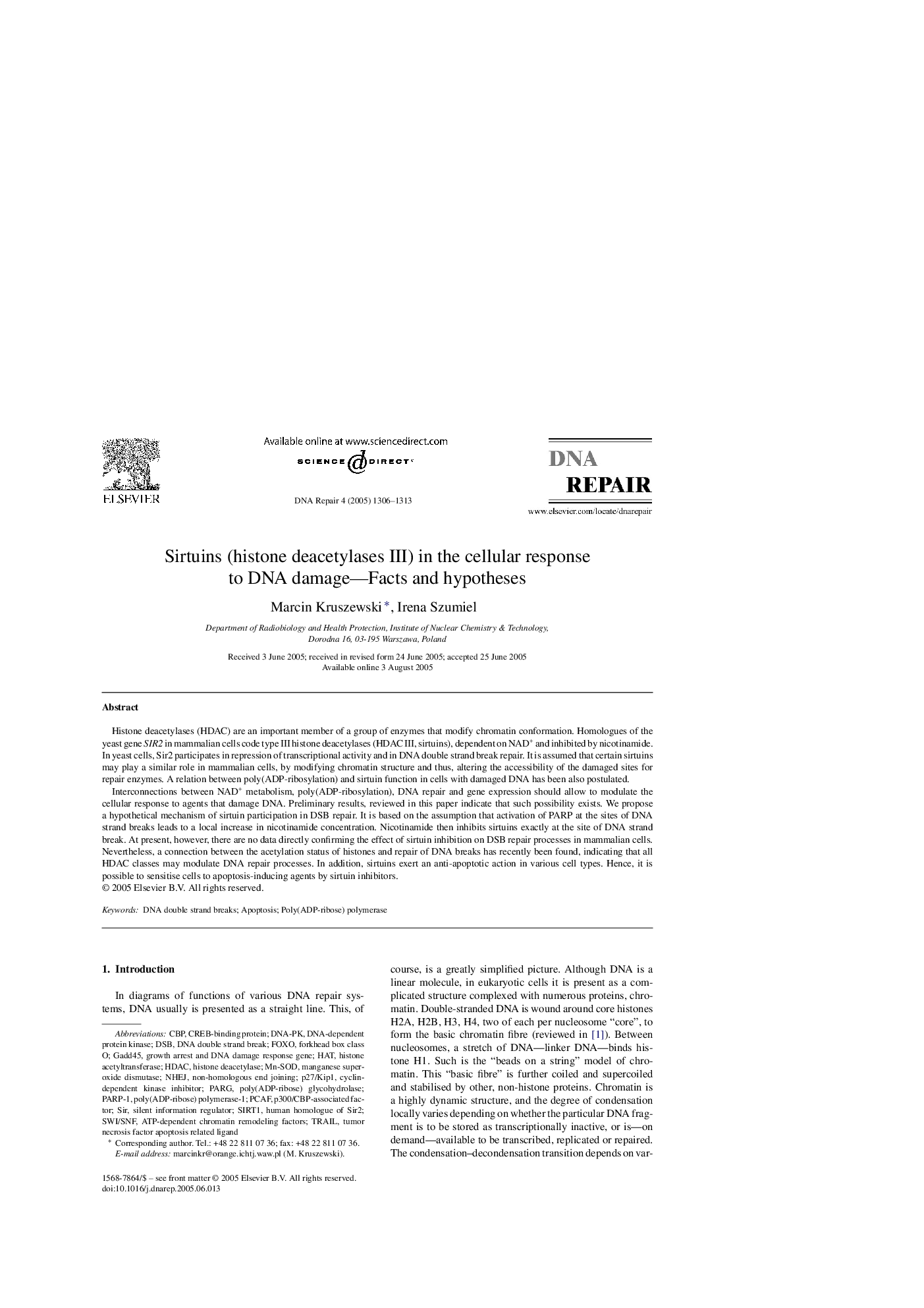| Article ID | Journal | Published Year | Pages | File Type |
|---|---|---|---|---|
| 10823999 | DNA Repair | 2005 | 8 Pages |
Abstract
Interconnections between NAD+ metabolism, poly(ADP-ribosylation), DNA repair and gene expression should allow to modulate the cellular response to agents that damage DNA. Preliminary results, reviewed in this paper indicate that such possibility exists. We propose a hypothetical mechanism of sirtuin participation in DSB repair. It is based on the assumption that activation of PARP at the sites of DNA strand breaks leads to a local increase in nicotinamide concentration. Nicotinamide then inhibits sirtuins exactly at the site of DNA strand break. At present, however, there are no data directly confirming the effect of sirtuin inhibition on DSB repair processes in mammalian cells. Nevertheless, a connection between the acetylation status of histones and repair of DNA breaks has recently been found, indicating that all HDAC classes may modulate DNA repair processes. In addition, sirtuins exert an anti-apoptotic action in various cell types. Hence, it is possible to sensitise cells to apoptosis-inducing agents by sirtuin inhibitors.
Keywords
Sirt1Gadd45PCAFDNA-PKCBPforkhead box class OPARGp27/kip1SIRHDACNHEJPARP-1DSBMn-SODSWI/SNFsilent information regulatorApoptosisDNA double strand breaksmanganese superoxide dismutaseDNA double strand breakP300/CBP-associated factornon-homologous end joiningFoxOTRAILcyclin-dependent kinase inhibitorHistone acetyltransferasehistone deacetylaseDNA-dependent protein kinaseCREB-binding proteinPoly(ADP-ribose) polymerase-1Poly(ADP-ribose) polymeraseHATpoly(ADP-ribose) glycohydrolase
Related Topics
Life Sciences
Biochemistry, Genetics and Molecular Biology
Biochemistry
Authors
Marcin Kruszewski, Irena Szumiel,
